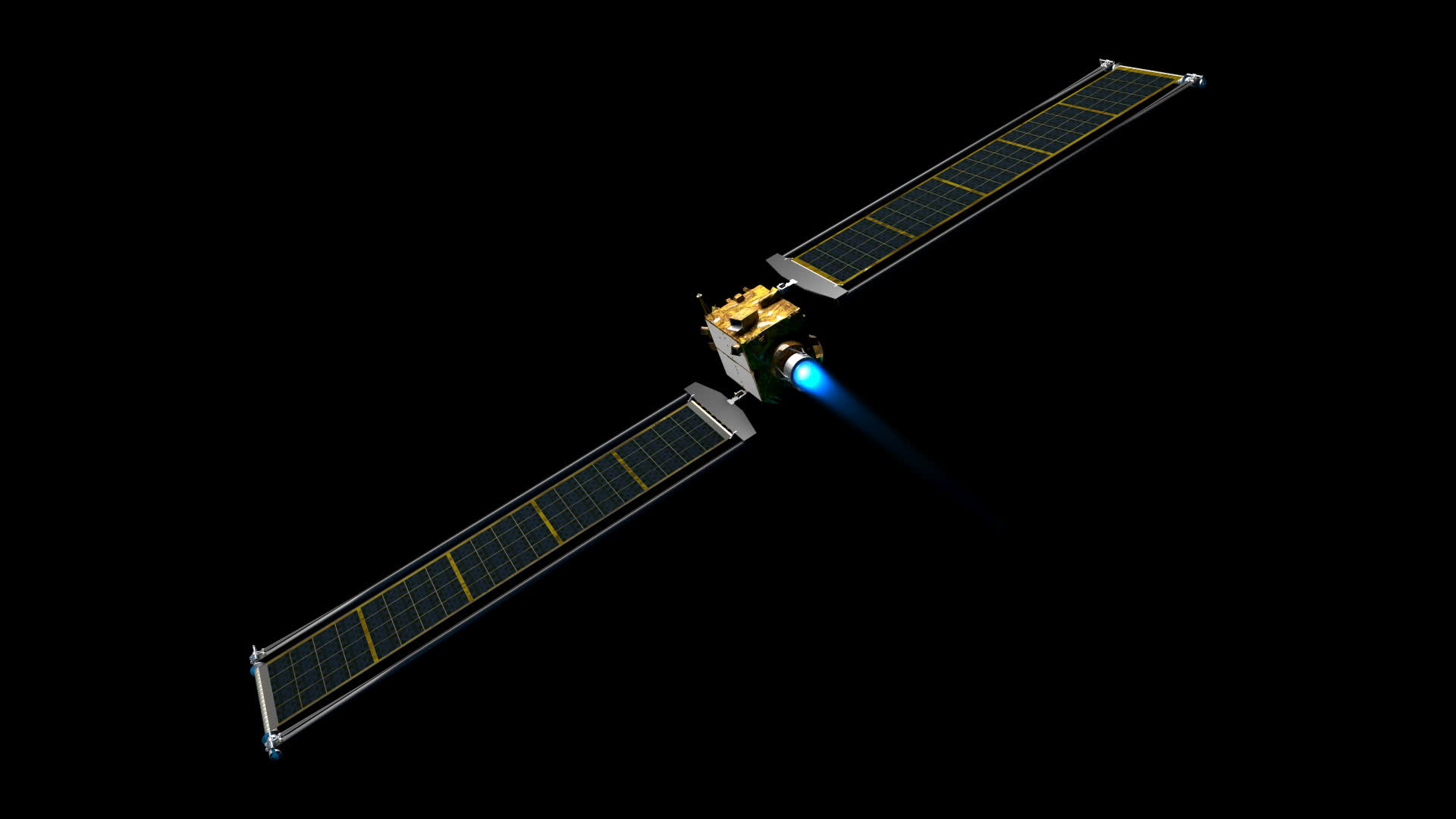In context: Our planet can be a beautiful place at times, but, someday, a gargantuan asteroid might just decide to put a premature end to our collective fun. Relative to the size of other astral bodies, it wouldn't take much space rock to damage the planet -- even a 150-meter asteroid is big enough to pose a "significant threat" to Earth. That's why NASA has been working on DART: the Double Asteroid Redirection Test.

Since bringing an Asteroid's momentum to a complete stop is unfeasible with our current level of technology, and we've yet to construct a sci-fi energy shield around the entire planet, deflection is the next best option in humanity's arsenal. And deflection is exactly what DART hopes to accomplish.
In essence, DART will use what NASA calls a "kinetic impactor" technique to send a spacecraft into the great void, with the specific intent of achieving a collision with a target asteroid. NASA hopes this will knock potentially-threatening asteroids far enough off course that the Earth is no longer in their trajectory. That's the long-term goal, anyway. In the short term, NASA needs to make sure their technology works: that's where its first proper test comes in.

NASA will launch its DART spacecraft during the wee hours of the morning tomorrow or tonight if you're a night owl like me. The event kicks off at 1:21AM Eastern Time on November 24. The asteroid DART will aim for is known as Didymos, with a primary body measuring a whopping 780 meters across. The smaller body is around 160 meters and will be the target of the demonstration.
DART is launching aboard a SpaceX Falcon 9 rocket and will take off from the Vandenberg Space Force Base in California. Once DART has successfully parted ways with its carrier rocket, it will travel toward its destination with an expected arrival falling sometime in September 2022.

We should be clear that, according to NASA, Didymos is not a threat to the Earth right now, which is precisely why the organization wants to use it as a glorified test subject. If NASA's calculations are correct, DART's collision with the "moonlet" of Didymos will change the speed of its orbit around the main body by a "fraction of one percent." That equates to an "orbital period" change of several minutes, which should make it observable and measurable by telescopes on Earth.
The ability to observe Didymos' little brother is critical to the success of the mission. NASA will rely on visual cues, such as how often the moonlet dims the light that washes against Didymos, to determine whether or not it has been successfully nudged off course.
It'll be awhile before us ordinary folk get our hands on that data, but this is an exciting time nonetheless and we can't wait to see whether or not DART's mission will be a success. Let's just hope nothing goes wrong with the launch tonight.
https://www.techspot.com/news/92357-nasa-launch-spacecraft-asteroid-knock-off-course-tonight.html
